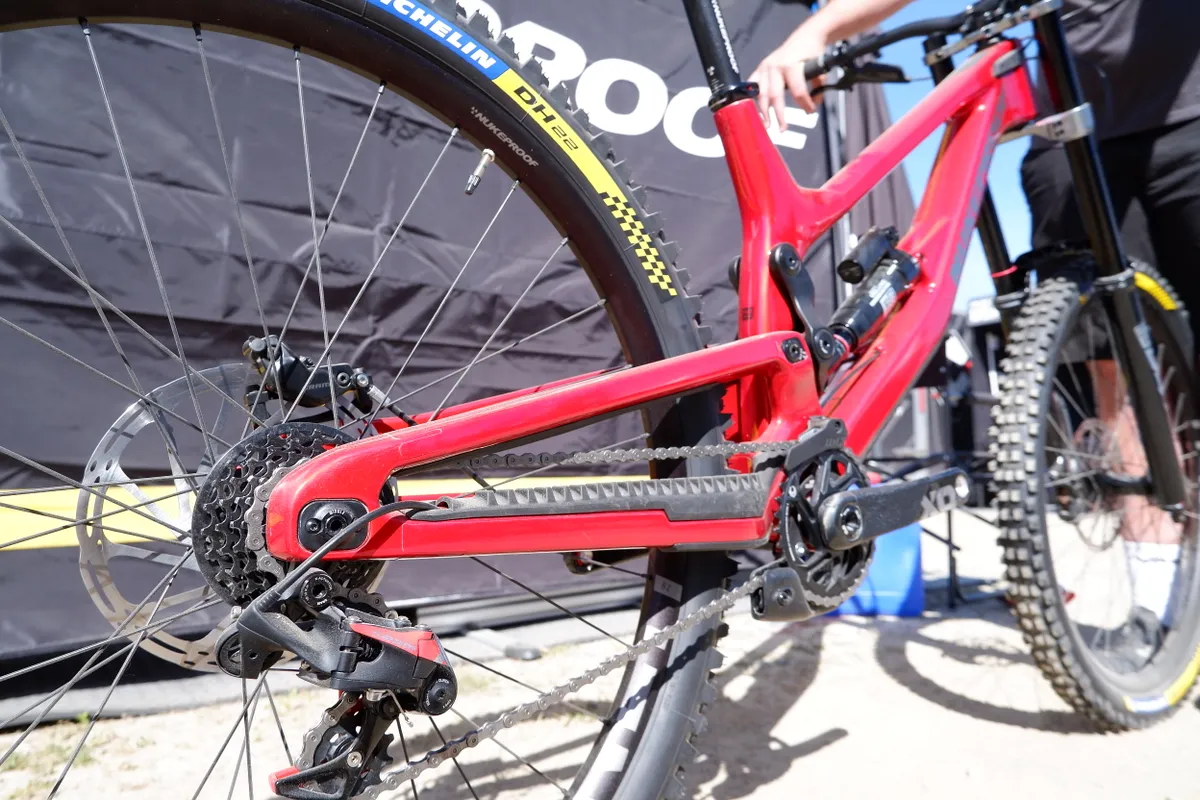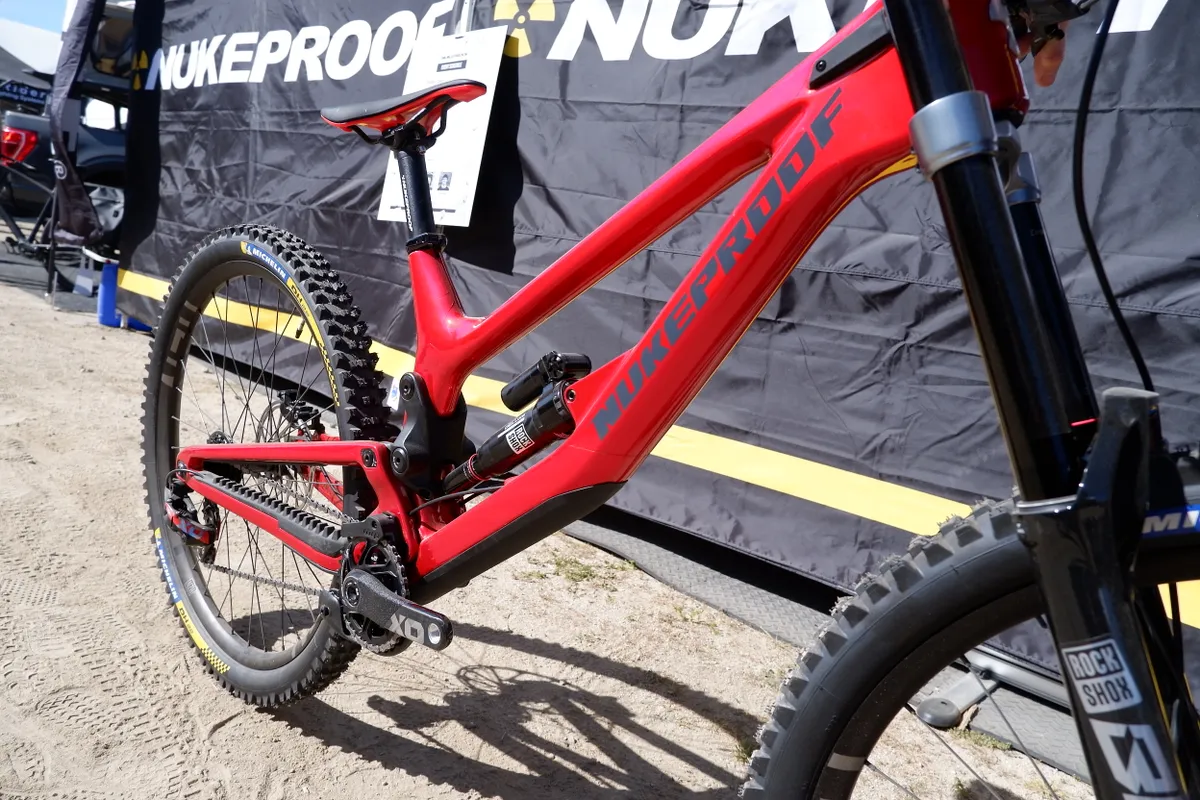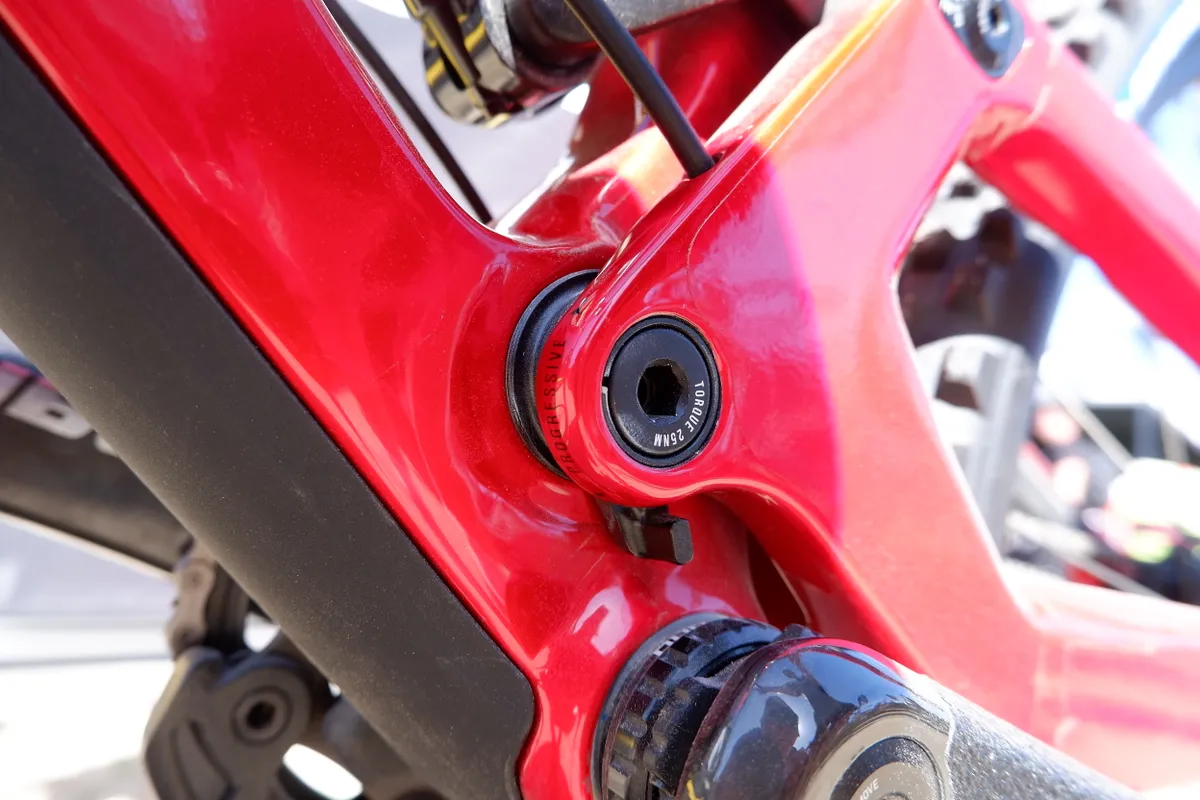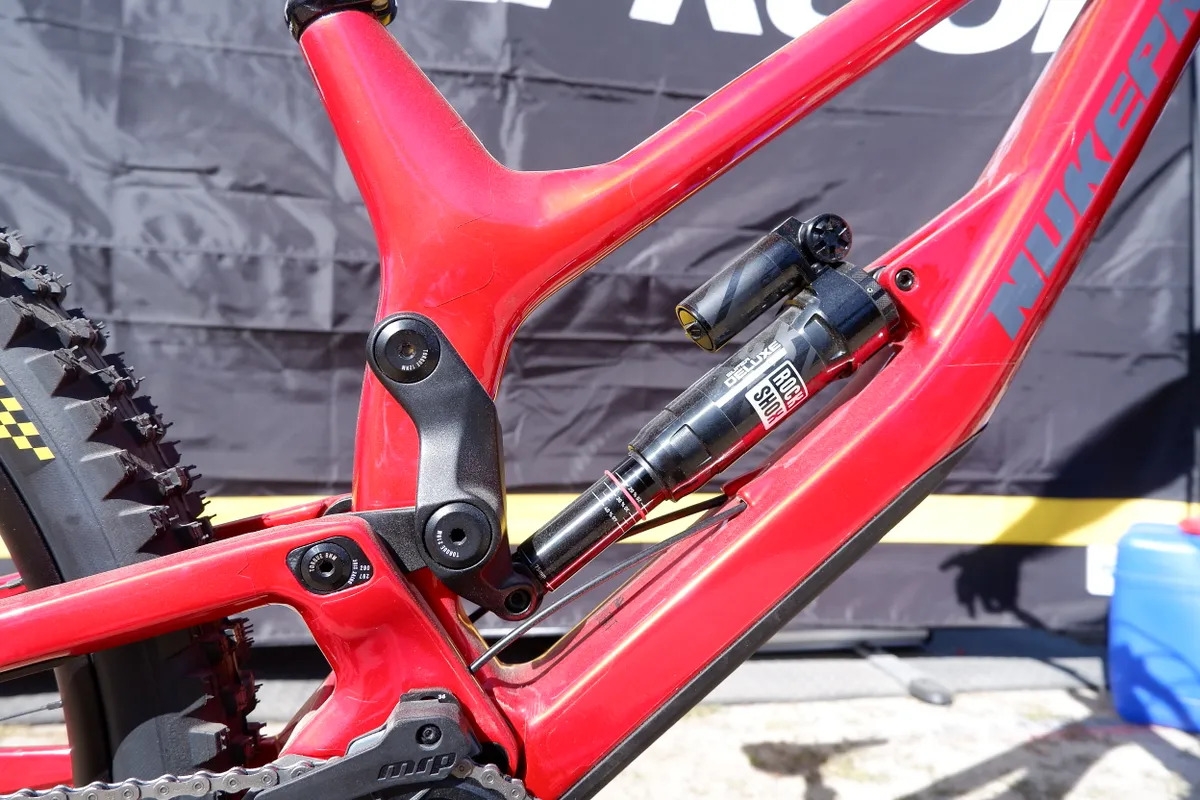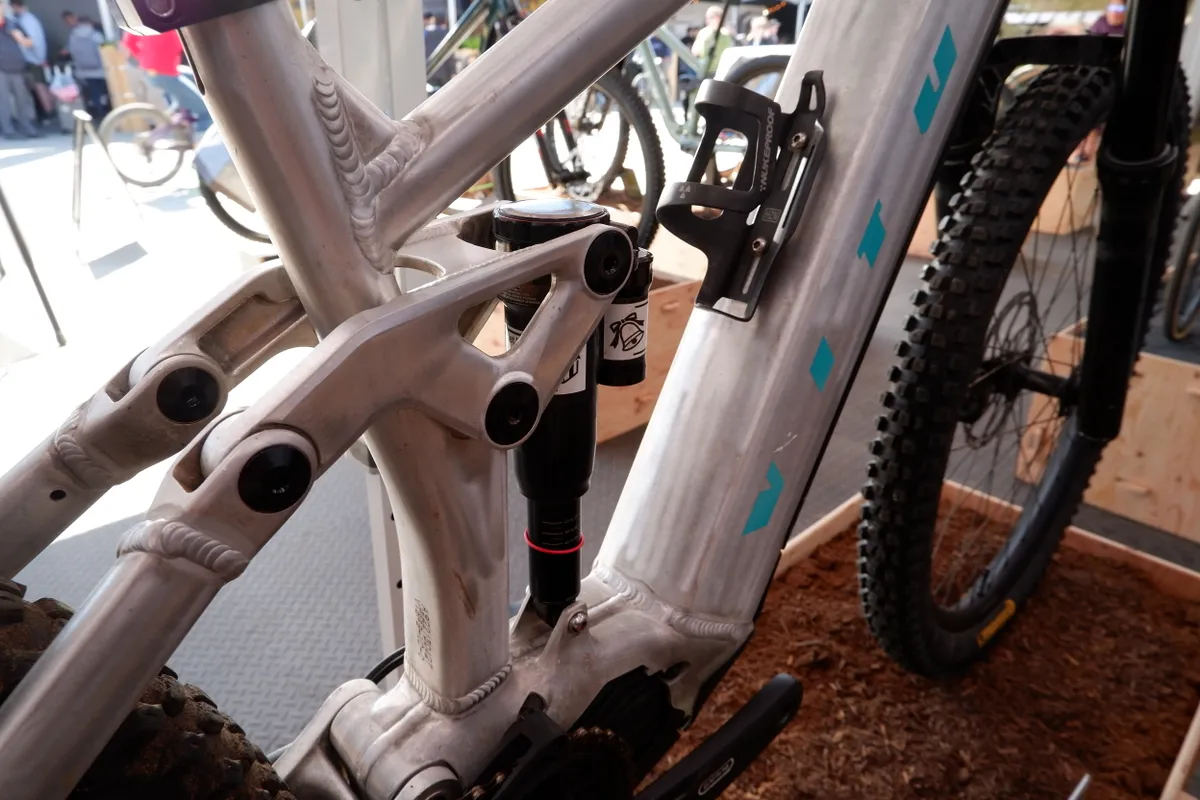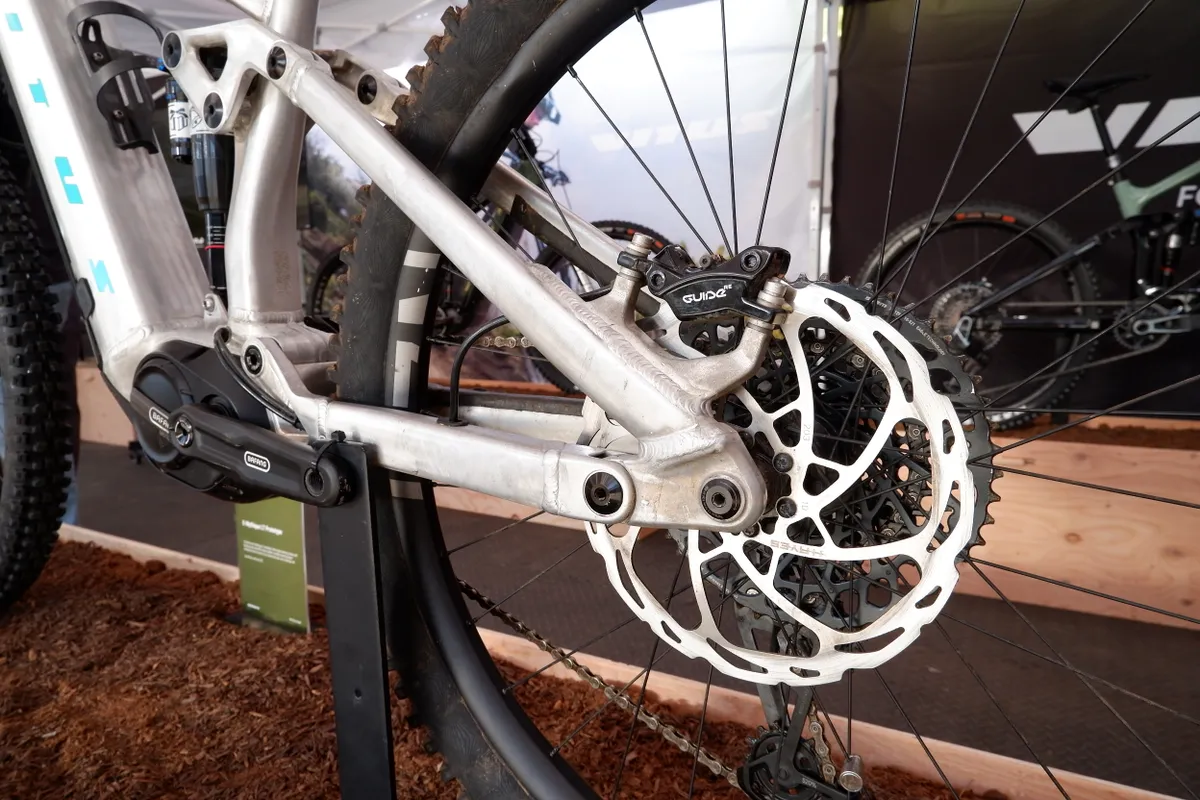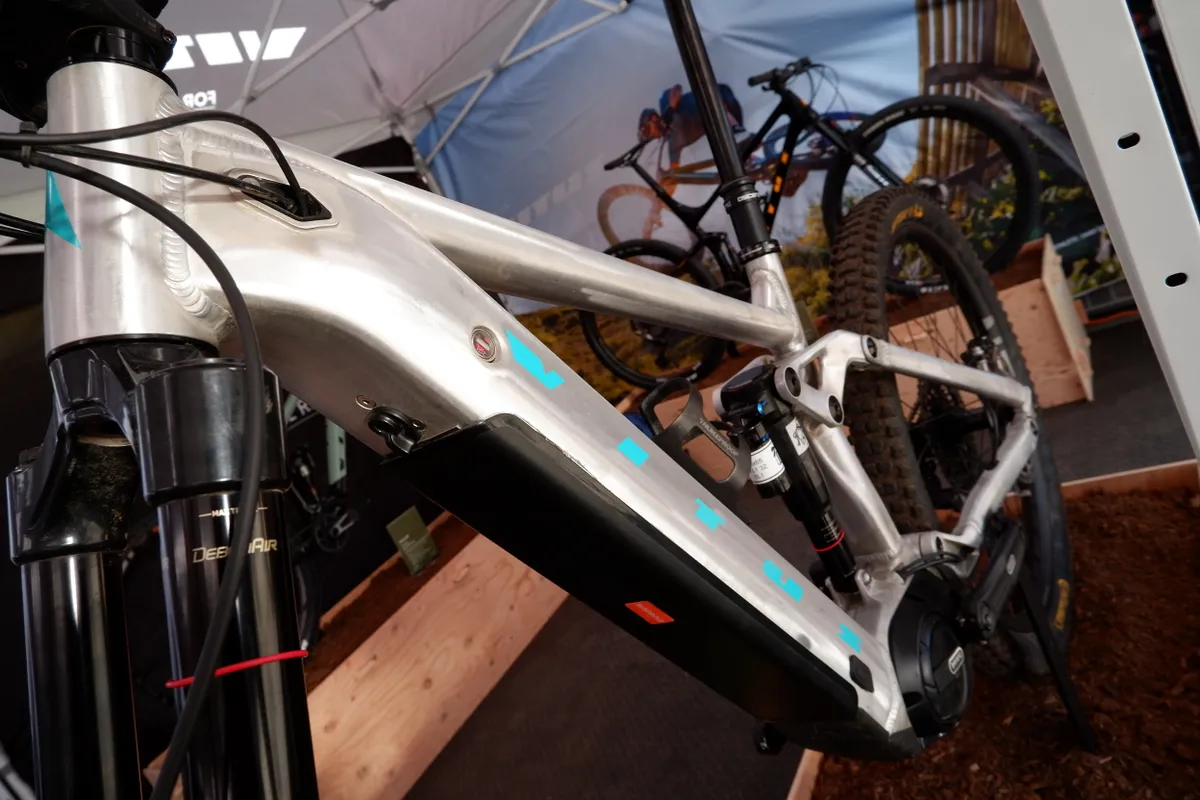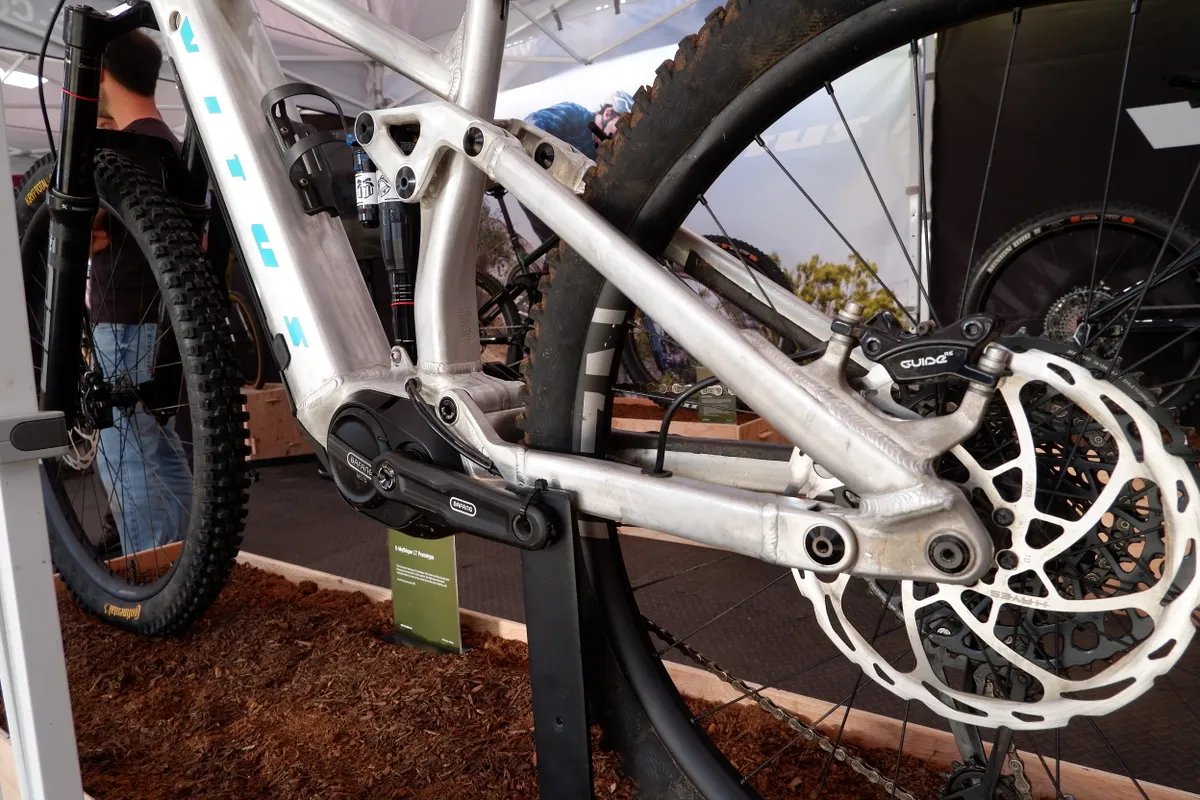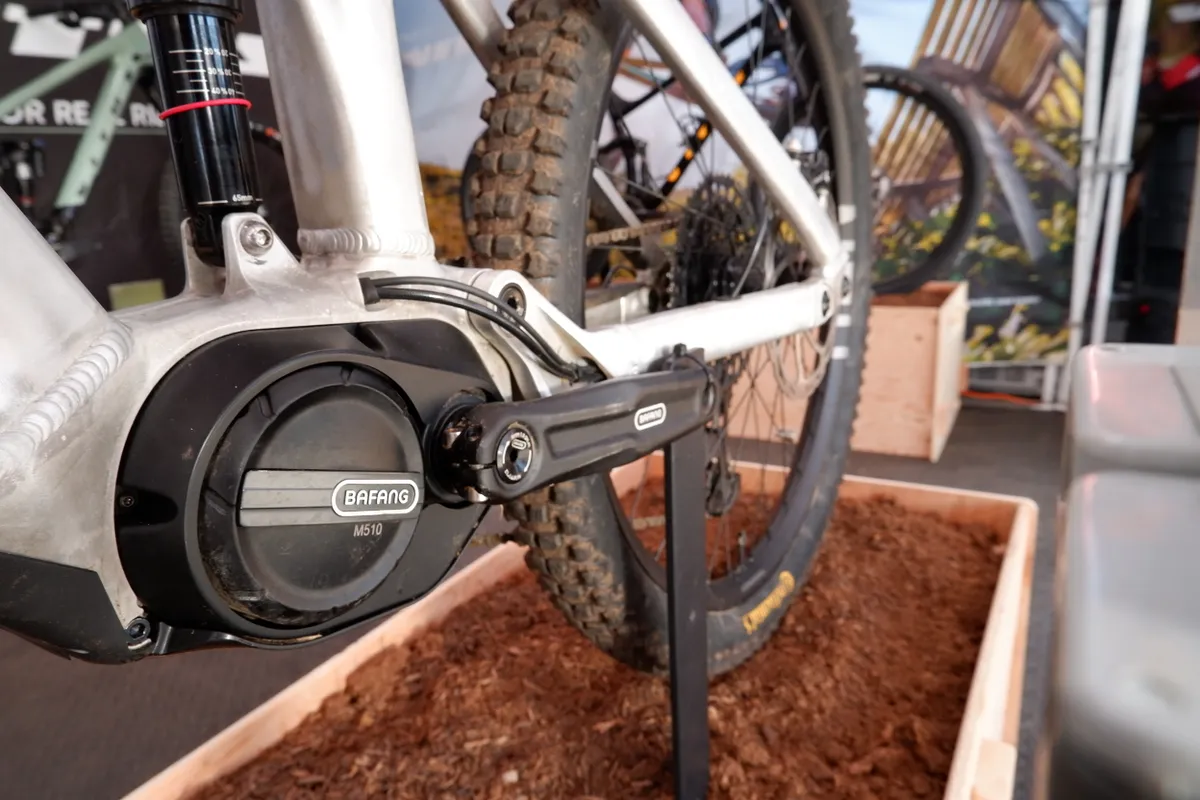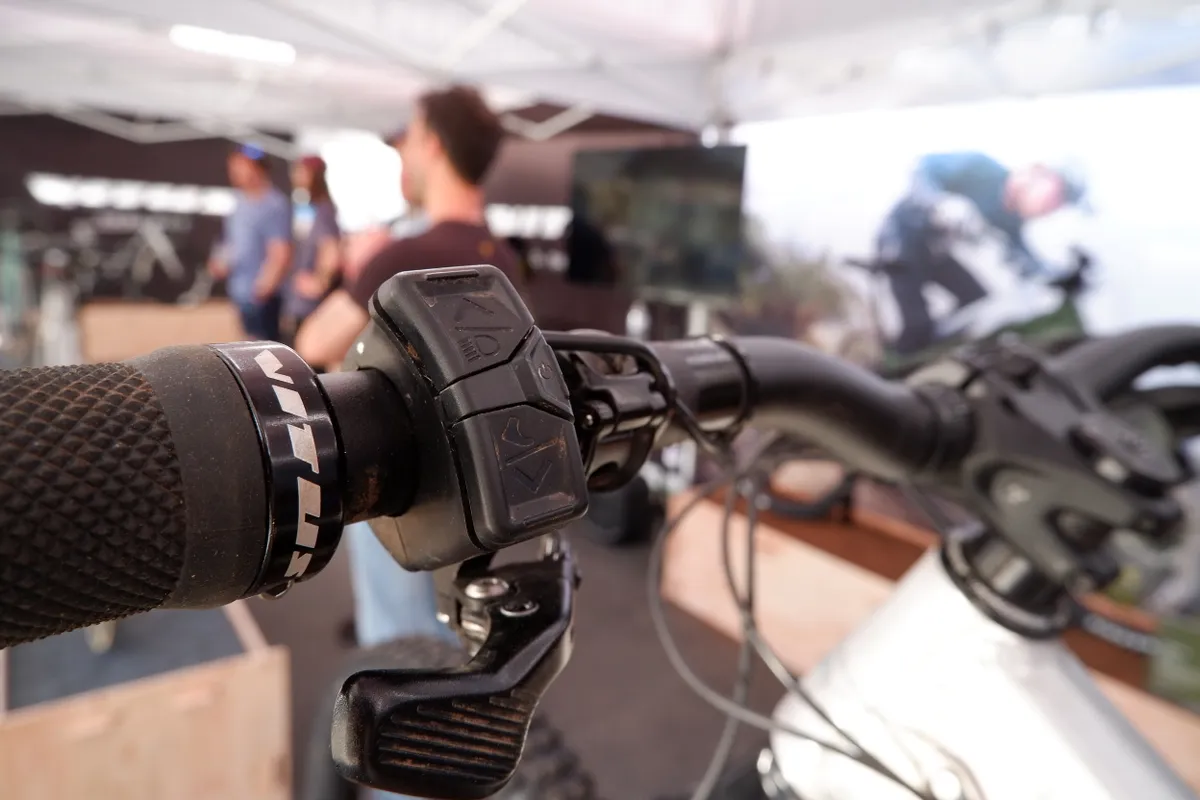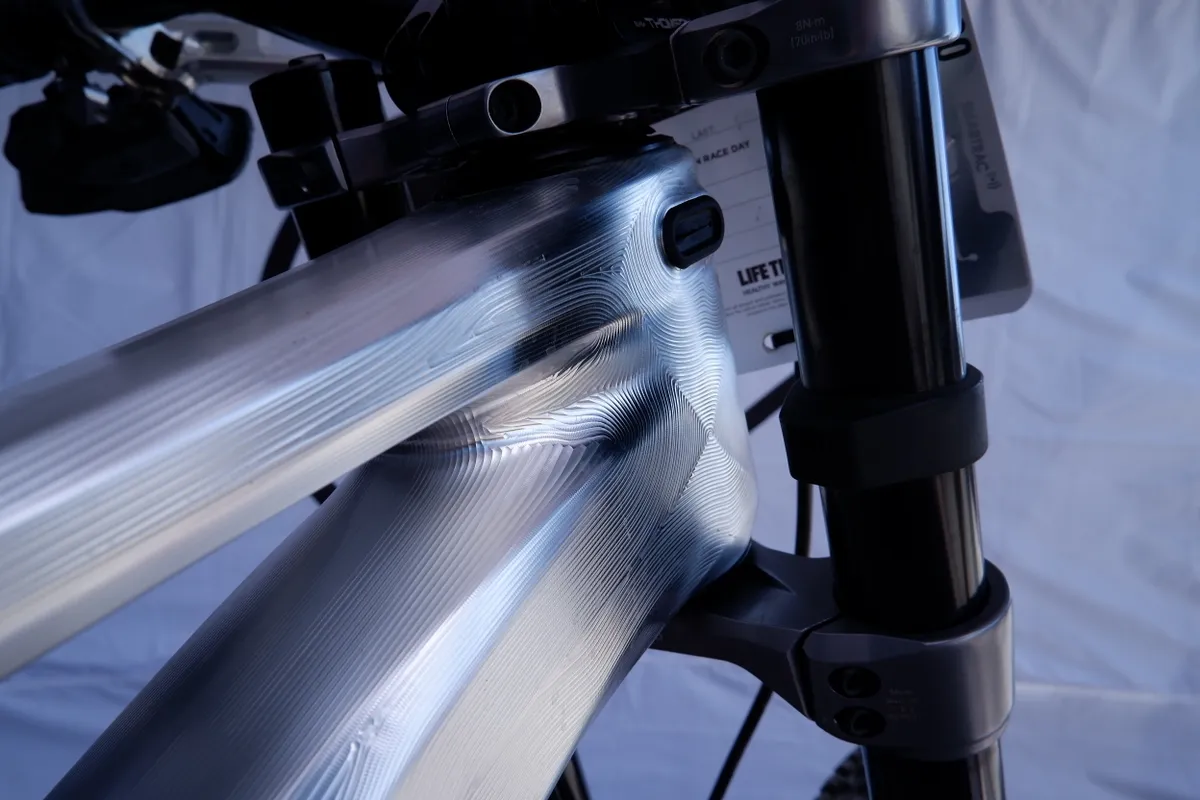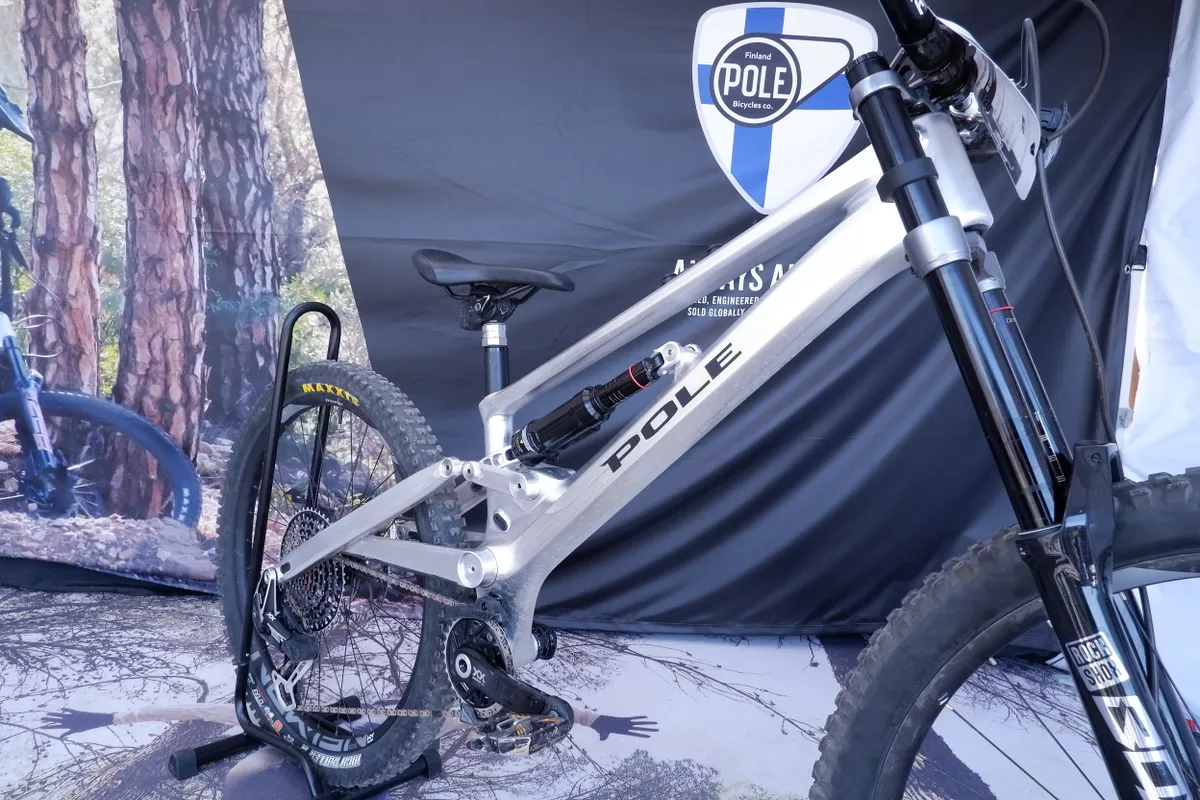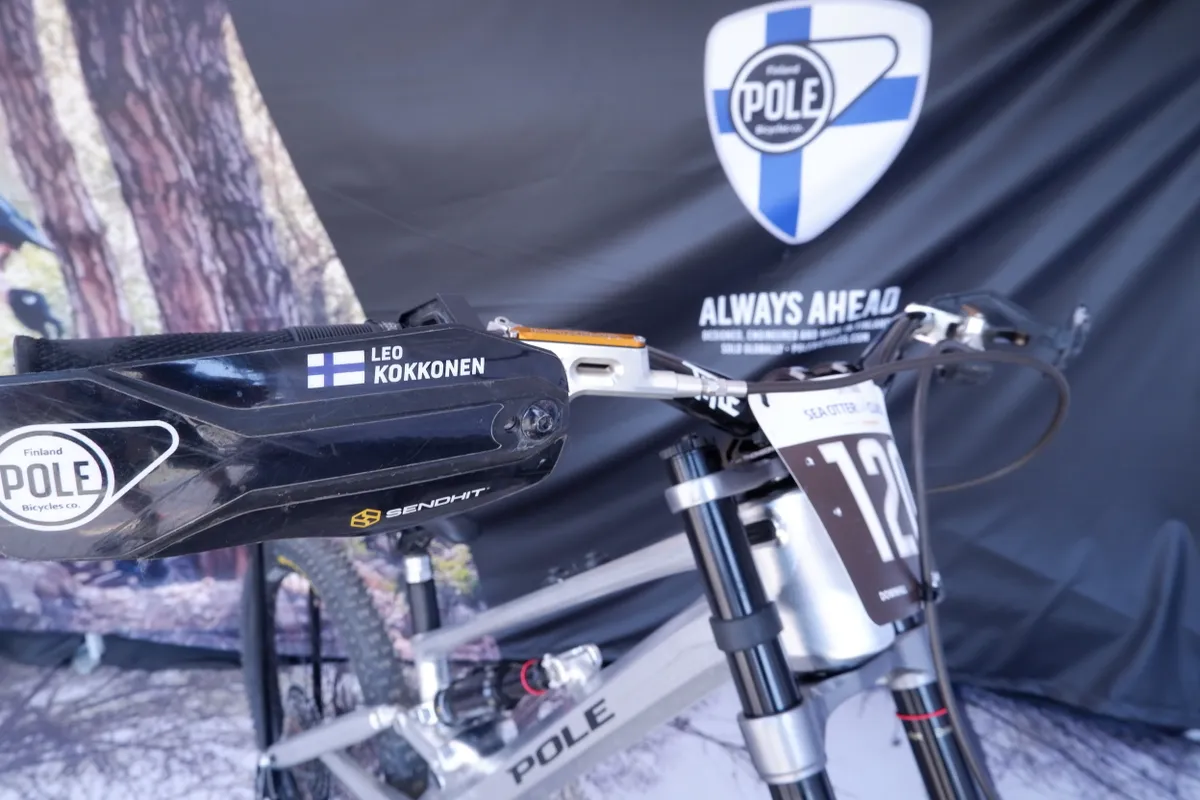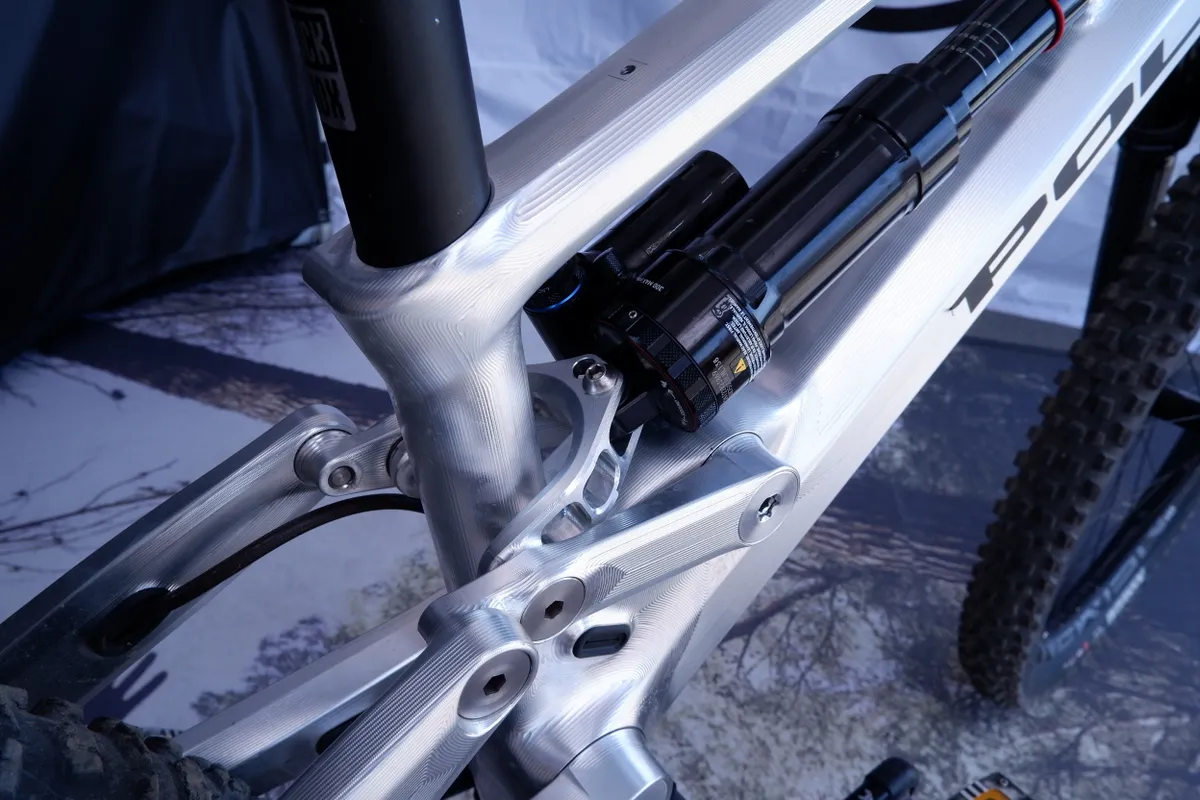Sea Otter presents the press and public an opportunity to ogle over new bikes, and brands are keen to fill their stands with their most eye-catching models for the world to see.
While brand-new launches are less common at trade shows these days, there are still new bikes we've not seen in the flesh yet.
In addition, a few brands are brave enough to show off as-yet-unfinished models, teasing us with some pre-launch goodies.
In fact, of the five bikes shown here from Nukeproof, Pole, Vitus and Yeti, only one is on full release and available to buy.
Nukeproof Dissent Carbon downhill bike

Nukeproof has released the carbon version of the Dissent DH bike, following plenty of testing from pros across the 2022 downhill season.
The frame's carbon front and rear triangles create a bike that's as adjustable as they come, with a number of geometry and suspension tweaks available at the tip of your Allen key.
Replaceable headset cups offer /- 6mm reach adjustment, while the chainstays can be altered in length with a three-position chip in the rear half of the bike.
The Dissent can run on 29in or mullet wheels, giving options to change the ride feel, or suit different rider styles and heights.
Finally, there's the ability to alter the progression of the rear suspension between 21%, 25% and 28%, via the main pivot. Two of those positions are tool-free changes, thanks to a neat rotating lever around the pivot, with the third coming via a quick twist of your Allen keys.
The bike features 200mm of travel at either end, with Nukeproof aiming to improve the suppleness and sensitivity of the rear suspension on this bike.
There's space for 2.5in wide rubber, Enduro Bearings as standard, and plenty of frame and paint protection from the shop.
Comp ($5,199) and RS ($6,999) builds and frame-only ($3,199) options are on sale, with the builds featuring RockShox suspension, SRAM brakes and drivetrain components, and Nukeproof finishing kit.
Vitus E-Mythique LT electric mountain bike
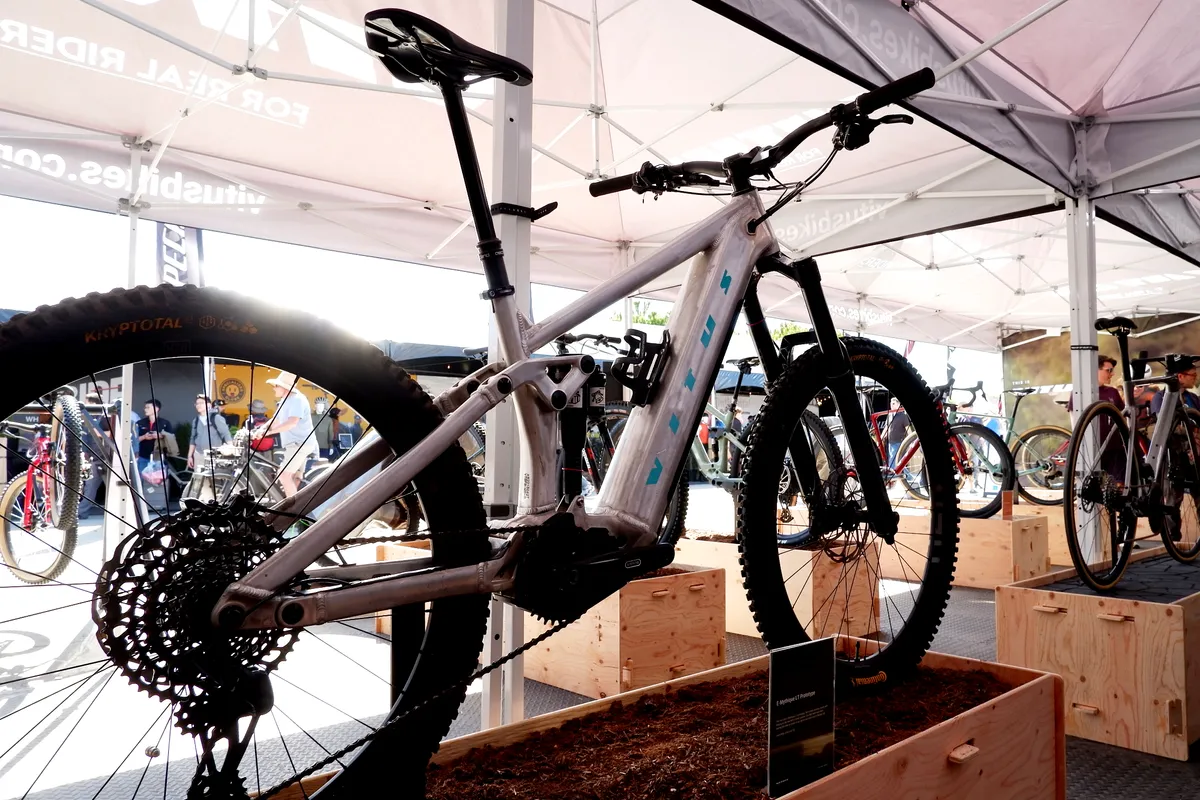
Later this year, in July, the E-Mythique LT will join the E-Sommet in Vitus' electric bike stable.
While the regular Mythique runs on 140mm suspension front and rear, the E-Mythique LT enjoys 160mm at the rear and 170mm up front. If you've got a motor to help on the ups, you might as well make the most of its assistance and drag around a little extra travel, right?
Being a Vitus, there's no surprise that the geometry looks up to date, with a Large getting a 485mm reach, 445mm chainstays, and head and seat angles at 64 and 78 degrees respectively.
It's also no surprise that pricing looks to be keen.
There will be three models (the VR, VRS and VRX), with the top-level bike getting a SRAM GX drivetrain, Rockshox ZEB/Super Deluxe combo, Vee Tires rubber and 4-piston brakes, all for around £4,000 (US pricing TBC).
Costs have apparently been reduced in two ways. The frame shares linkages and bearings with the non-powered Mythique, and the frame's shapes are less complex than those found on the E-Sommet.
Vitus has also, interestingly, gone to Bafang for the motor and battery system, making the brand Bafang's largest client.
This means Vitus has apparently been able to work with Bafang to get the tune of the M510 motor right for the bike's needs, as well as having an influence on the general build of the system.
Riders will have access to five modes, with an on-bar controller and separate display.
The motor will kick out an impressive 95Nm of torque, up to 400 watts of power and the 630Wh battery is swappable via a door in the down tube.
Pole Onni downhill bike

Finnish brand Pole has, up until this point, had a glaring gap in its range – a downhill bike.
However, lovers of innovative manufacturing and rather extreme geometry won't have to wait too long.
Leo Kokkonen, Pole's founder, showed us the new Onni downhill bike, which should be available for pre-order in the middle of May.
It'll come as no surprise that the bike is built using two halves of CNC'd aluminium, machined in Finland and bonded together to create each main section of the frame. The CNC'd finish is as tell-tale as the wild shapes formed by the company.
Tolerances are said to be incredibly tight, with bearing surfaces machined with 0.01mm accuracy, according to Pole, and the outer surface cut to 0.1mm accuracy. This, says Pole, ensures consistent performance, minimal maintenance and plenty of longevity for the shock.
Pole uses aluminium, as it's said to be much more environmentally friendly when compared to carbon fibre. The metal is easier to recycle, there's an established recycling industry, and the swarf from the machining itself is easy to clean up and recycle.
On the face of it, the 200mm front and rear travel bike is what you'd expect from a DH machine – plenty of travel, slack angles and laterally stiff (as Leo was keen to show us).
However, there are not many DH bikes that you'd want to race a multi-day enduro on, such as the Trans Madeira...
Yes, Leo is taking his DH bike, though with a regular 12-speed drivetrain, to the island to compete in the five-day race.
That's because the frame has high levels of anti-squat, for a DH bike, and a steep seat angle – so, with a dropper post and regular gears, it shouldn't be too painful to pedal around. That's his hope, anyway.
Leo reckons that he can get the bike built up to around 16kg fairly easily, even when DH-spec components are used, thanks to a 3.5kg weight for the frame.
More details on pricing and geometry should be available soon.
Yeti's Special Projects DH and dirt jump frames
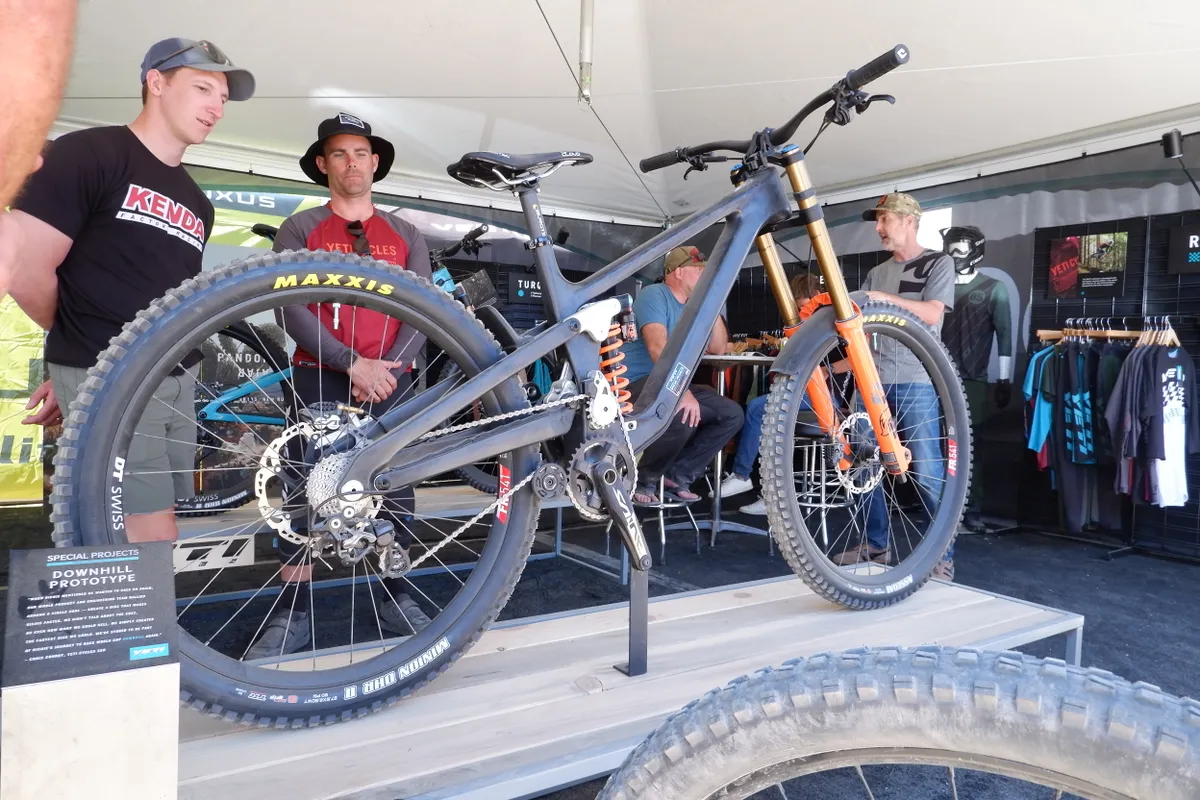
If you're a high-profile, long-term rider for a brand, you occasionally get to swing a bit of influence and get your bike brand's engineers to knock up a bike for you.
In this case, Richie Rude is said to have asked Yeti's engineers to knock up a downhill bike ready for the upcoming season.
The Special Projects DH bike has 205mm of rear wheel travel using a 6-bar linkage similar to that found on Yeti's ebike, the 160E, dubbed Sixfinity. It runs on mullet wheels.
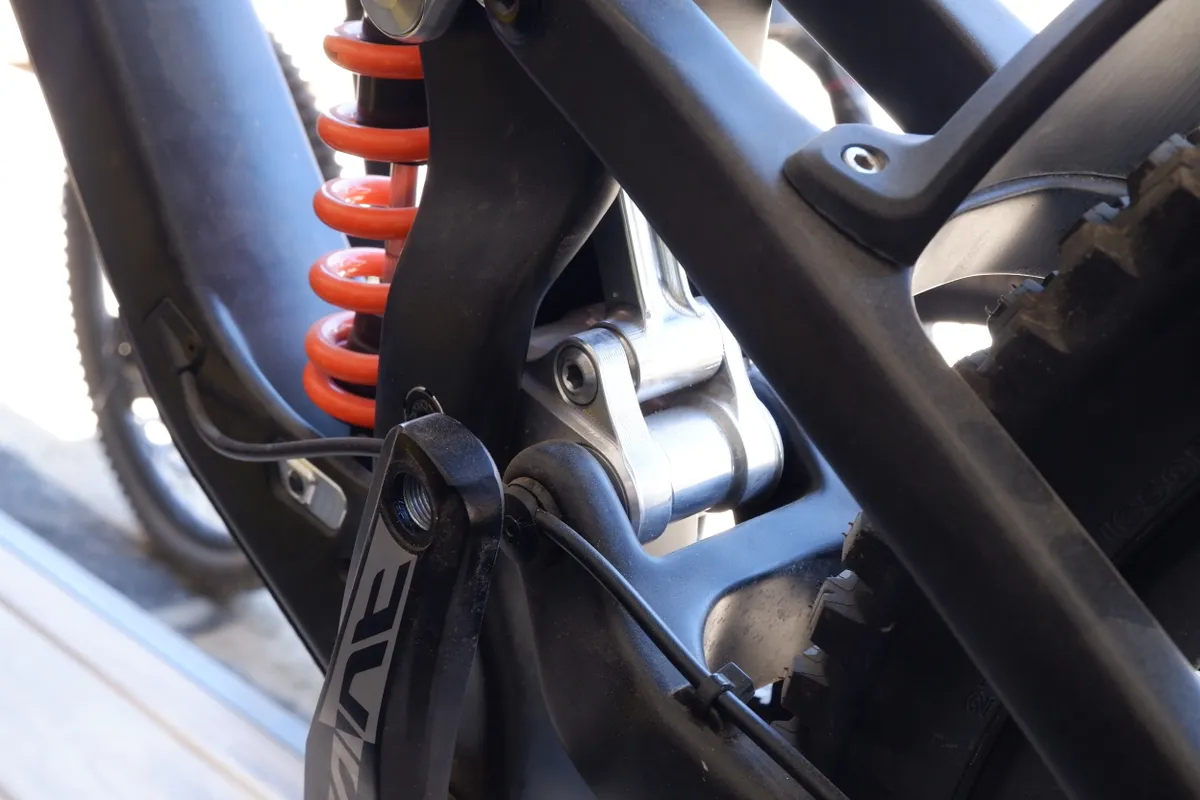
On the DH bike, there's a slightly more rearward axle path, thanks to a raised main pivot, and an idler pulley wheel.
Given development bikes often need plenty of tweaking to get suspension and geometry lay-ups just right, carbon is a tough material to work with, given the cost of the moulds.
As a result, there are numerous chips and adjustment points constructed in-house by Yeti to give a little more flexibility.
Next to the DH bike was a dirt jump bike.
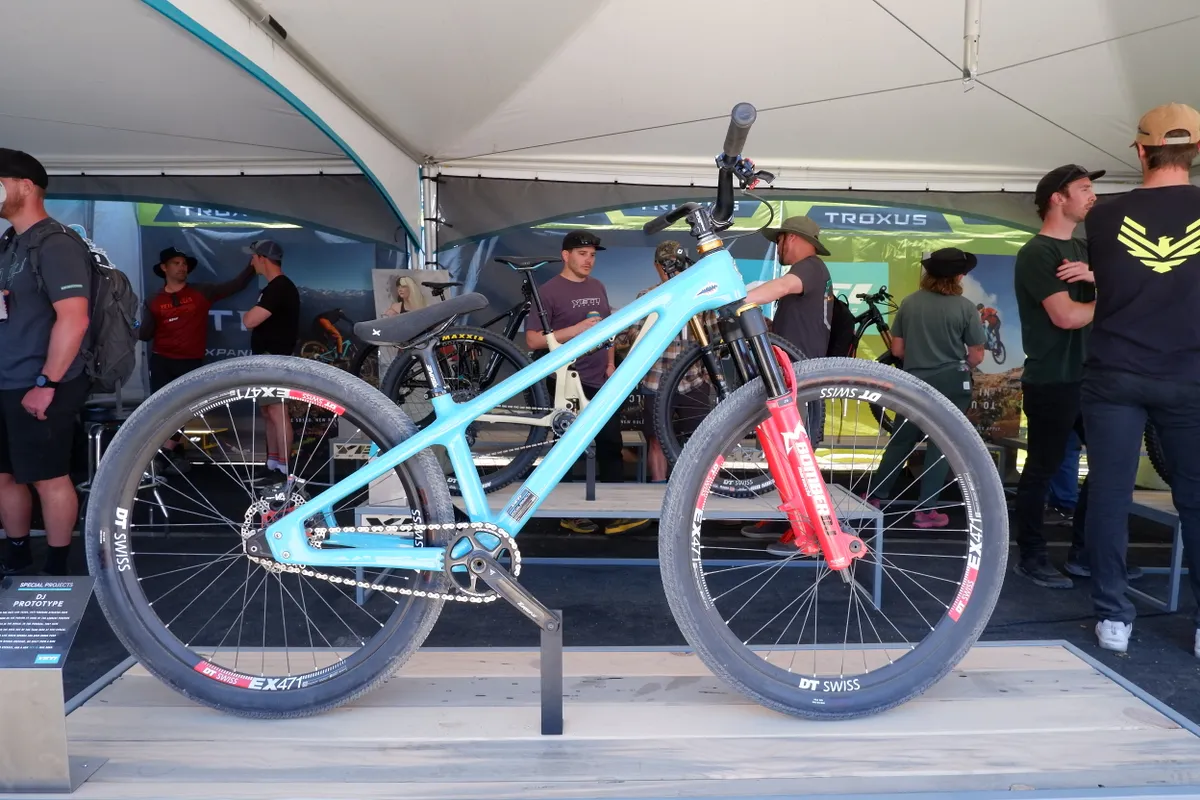
Sadly we weren't able to glean much information on the bike, as the Yeti stand was predictably very busy!
However, it looks the part.
The bike runs on 26in hoops, has a Marzocchi Z1 DJ fork up front, and is finished in Yeti's signature turquoise paint.
There's a chain tensioning system at the rear of the bike to keep the chain taught.
Around the non-driveside crank/BB interface was a jubilee-clipped strip of rubber, so that the cranks don't spin when Reed Boggs (Yeti's dirt-jumping supremo) is in the air with his feet off the pedals.
As yet, we don't know if or when either bike will be available, but we hope to see them on the tracks and trails soon.

